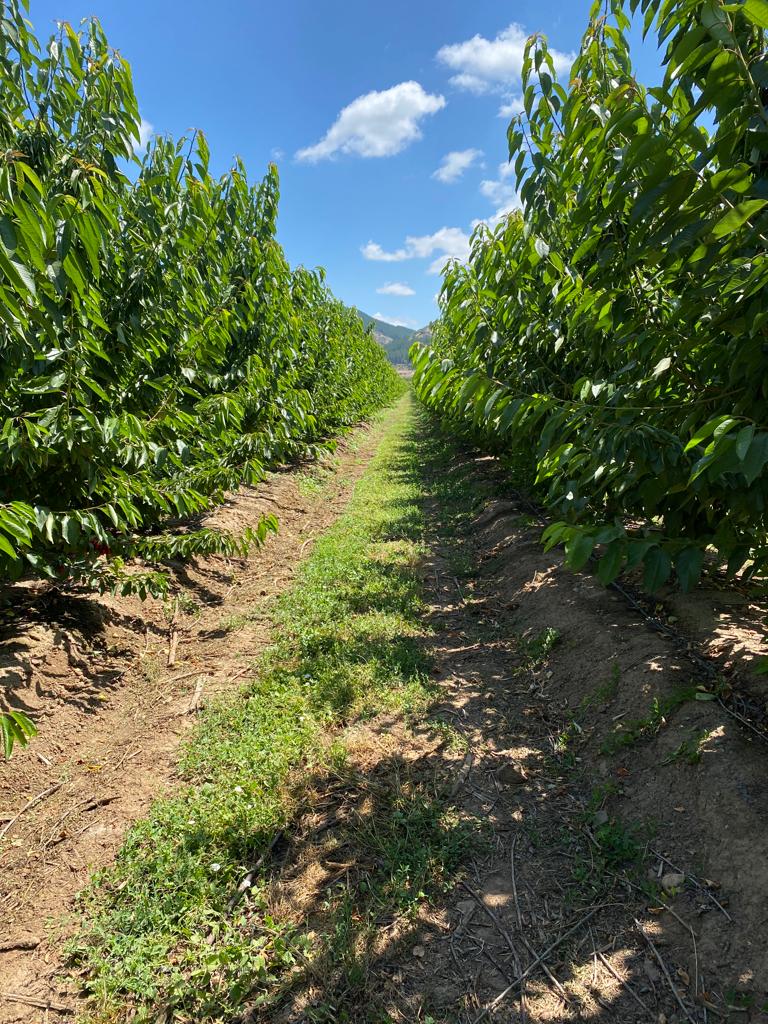Renowned technical advisor and consultant, Walter Masman, gave a masterful presentation at Cherry Tech 2023, where he analyzed the reality of cherry production and the varieties produced in the country.
Considering how the world of new varieties is developing and the points that must be considered in the Chilean cherry industry, what is the current status of the development of the varieties that the national industry needs today?
We are in an evaluation process. In previous years, the world of cherries has been affected by the participation of varieties that were not able to meet the requirements that the market demands today. At one time, they were able to satisfy clients in Latin America, and eventually in the United States, since they were shorter trips or different post-harvests. However, since China is becoming our main market, the format has to be different.
That is why what exists today, what has been successful, have been traditional varieties such as Santina, Lapins and Regina, the latter being questioned in the last two years due to post-harvest, and what has been done since 2015 has been an irruption of many genetic programs, where something new appears every year. From there, the varieties of each program have been developed, with some characteristics in the early, in the intermediate, in the late, and that is where the industry is.
With the debut of the first varieties tested some time ago at the testblock level, this is the year of a couple of varieties and I dare say perhaps a little more, and they are very important from the point of view of how to see and analyze it to see if they actually work and maintain the parameters evaluated in these tests.
What are the varieties that are already being heard about, with which trials are beginning to be carried out here in our country?
There is a program that Ana manages, an entity that is dedicated to bringing various programs to a global level and begins to carry out a series of tests on each of the varieties. Ana manages the SMS program, a program in the United States where the most important variety is Frisco, which already had a commercial debut three seasons ago, including this one, with erratic results, which we always said was a complicated variety.
I believe that there is a common denominator in some varieties, which are subject to a management program that is very different from what we have done with some of them that are very successful in Chile.
In the SMS program there is Frisco, this year Nimba and Pacific Red will debut, and after that there will be a variety that will probably debut commercially in two years, Epic16. On the other hand, there is an Italian program from the University of Bologna that is also managed by Ana and this year there is the commercial debut of the Sweet Ariana variety and probably also of the Sweet Gabriel variety. There is also Sweet Lauren, Sweet Sareta, a variety that is just beginning to be evaluated this year, along with Sweet Stephanie and Sweet Dave, which would perhaps be the earliest variety in this program.
All of them have a very interesting profile so far, according to what we have evaluated in Sweet Ariana and Sweet Gabriel in particular, which are relatively early varieties, probably eight days to a week before Santina. They are varieties of good caliber, easy to eat, with doubts regarding the issue of their acidity, which is still a little high, which could complicate our large market, which is China. If we are able to eventually wait for the harvest, to be able to regulate that acidity, which is always necessary from the point of view of the post-harvest itself. A variety with higher acidity also has greater persistence from the point of view of storage.
Then I can go to the IFG program, a very interesting program from the point of view of varieties with very low cold requirements, which generates a whole range of varieties for the entire early zone of Chile linked to the fifth and fourth regions. In addition, I have to see a trial that we are doing in Copiapó, to see if that could actually work.
I repeat, there are interesting varieties such as Cherry Ten or Cherry Cupid, there are also Cherry Eight and Cherry Treat. There is the Meda Rex program with the Ibu 115 variety, also an early variety, very interesting for its organoleptic characteristics, very firm and very rich in terms of flavor.
Then there is the JKI program, which consists of late or intermediate varieties, where the best known is probably Arico, a variety that is a daughter of Regina by Kordia, which has also made its debut and I believe that this year it will have a more powerful launch from a commercial point of view. There is also the Pisue variety and with several codes, Tapolca and a program that will probably debut at testblock level, there is also a German program called Kill Vulcano with particularly very late varieties.
What is happening with varietal development at the national level? I know that there is research into varieties and I would like to know the status of these variety investigations, which have that seal and that added value for the final consumer..
We are working on that. What we try to do is to always put a damper on something that is eventually interesting. Whenever one evaluates a series of varieties or codes at that moment, one begins to see a certain type of behavior from the point of view of production and product quality, which begins to have different statuses from the point of view of segregation. I think that this spreads quickly, there is so much interest on the part of producers in wanting to have something new, that sometimes those times are literally broken.
I think that in our case it is necessary to keep a cool head, to maintain the appropriate time to be able to evaluate a variety. It could probably be four or six years depending on the characteristics that one begins to see in the product as such. Now, there are genetic programs that are rushed or not rushed, there are programs that undoubtedly for a geneticist or for a nursery involved, their business is to sell plants. That is where we have to keep a cool head and say that what we sell tomorrow will be something that has positive consequences for the producer, so hopefully the producer will not pay the price.
In this result there is always a mix of both sides, both the producer who constantly asks and the nursery who only wants to sell, so one has to be in the center and ensure that both are responsible enough to limit this and have a good degree of evaluation, so that what comes out actually tries to have good results.
Now we can talk about a variety that is now a reality, which is Frisco. If one analyzes all the data that was given at some point during its evaluation, it always had erratic conditions in terms of behavior and now it is a tremendous variety, of very good caliber and it is very rich, it is a variety of its own and due to complicated genetics. However, if it falls into the hands of someone who is not capable of doing that work, undoubtedly the results will not be good.
Personally, I have very good results with Frisco, but that means having a different format from a management perspective and dealing with that variety in a different way.
Is the Chilean cherry industry on time to make this varietal change or is it a little behind with this change, projecting it already in the next five to ten years?
Not at all. What happens is that today the analysis we have carried out leads us to understand that everything we have done so far has been quite good. This is evidenced by the numbers: exponential growth, Chile is finally the leader in volume and quality.
I was recently in Spain and Italy and the truth is that there is a lot of admiration for what we have done at the industry level, both in production and in the post-harvest part. What we have are very good varieties, there are some that are iconic, there are three varieties that today have practically 80% of the market share.
Do we need to bring in new genetics? Undoubtedly. The product will continue to improve and that is how things happen, just as it happens in other industries. That is why I also brought in colleagues and friends who are experiencing the same phenomenon or have experienced it in the production of table grapes, in blueberries or what is happening today with stone fruit and other species as well.
I think that we are doing well today. I have no doubt that the 11 varieties we have will double in the medium term and we have to go step by step, but we are on the right track. This is a table where all the members have degrees of responsibility, both in the recommendation and in the evaluation, and the producer in being well informed in the program to try to deliver and what we really need in the nursery.
There is an absolutely joint commitment. We have to make the move to new varieties and surely some will come out of the way. This has been part of the history of cherries for 15 or 20 years and will continue to happen. Therefore, we are going well but at a steady pace, in a measured, balanced way, to make it sufficiently responsible.








